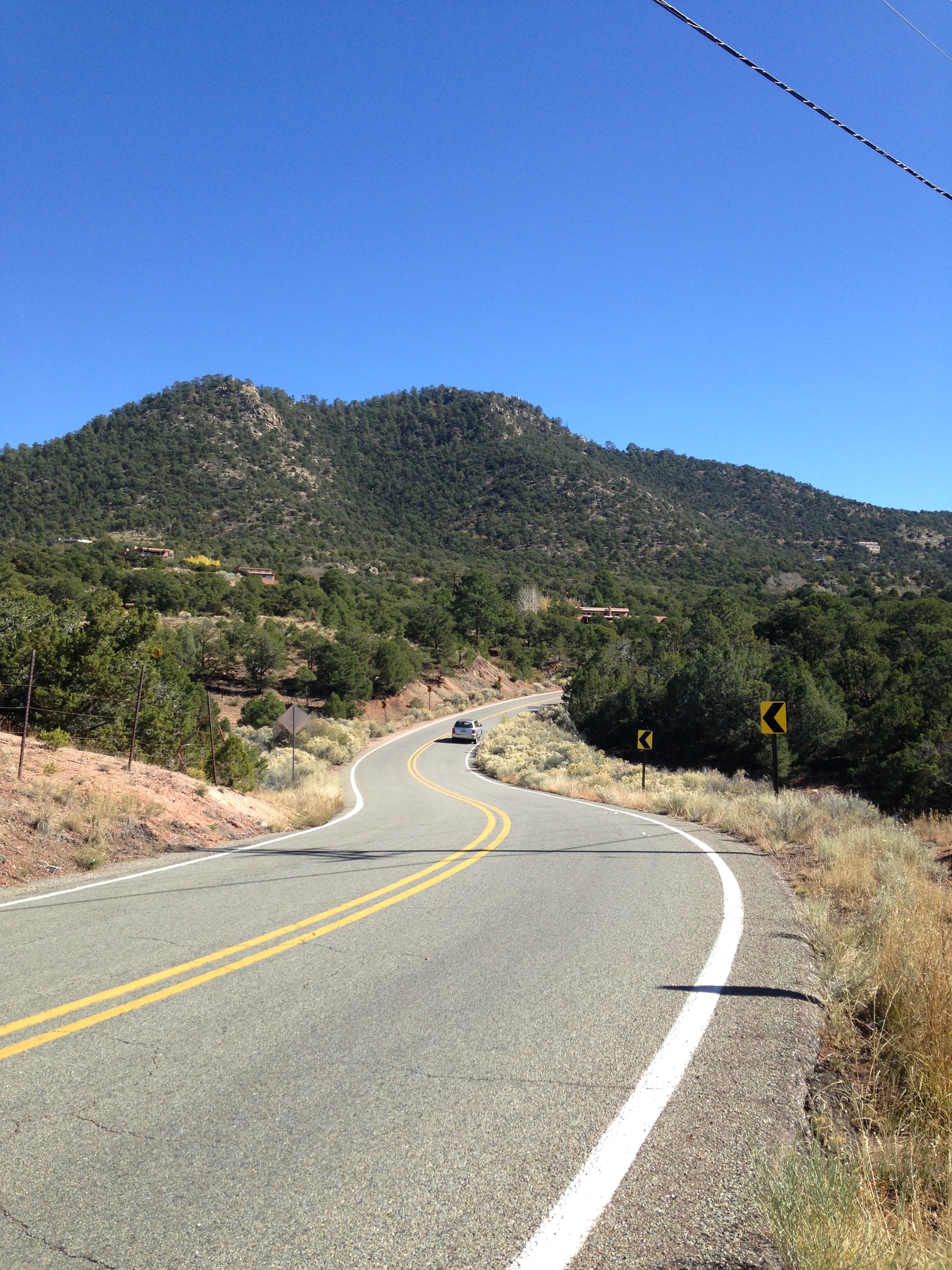Santa Fe Trail
October 26, 2018
Santa Fe Plaza to 7599 Old Santa Fe Trail Road
11 miles, 4.5 hours
“Colonialism is defined as the expansion of a colonizing nation into the lands of Indigenous nations for the purpose of acquiring lands, resources, and labor. It is behavior that includes calculated militant and diplomatic measures, often one in the same, devised and carried out by colonizers to politically subjugate, control, and dispossess the Indigenous landowners. This aggression was essentially an armed invasion that took years to complete. Members of the colonizing society typically developed propaganda expressed vividly if not accurately through the language of racism, aimed at giving a sense of destiny, propriety, and morality to their nation’s assault on Indian sovereignty, lands, cultures, and human rights. In doing so, they constructed a narrative based on such factors as ideology, discourses of conquest, expressions of racism, and innuendo to rationalize the westward spread of their people into Indian lands. They integrated the Santa Fe Trail into the master narrative.”
— James Riding In, 2010
Like all these old roads, the Santa Fe Trail was forged on trails used by native peoples. In the 1820s, after Mexico declared independence from Spain and opened up for commerce, U.S. businessmen went west from Independence, Missouri through Kansas and either Colorado or Oklahoma to reach Santa Fe. From Santa Fe they could keep going west to California or south to Mexico. So it was natural that the Santa Fe Trail was the route that the U.S. army took to attack and occupy Santa Fe in 1846 at the start of the Mexican-American War.
“Mainstream scholarship often tells the story of the Santa Fe Trail through the prism of American nation building and heroism, but this history is significantly more complex and nuanced than brave Euro-American pioneers overcoming the hazards of wild Indians, geographical barriers, and unpredictable weather.
The axiom that the winners interpret history rings true when it comes to the Santa Fe Trail and its enduring legacy…. I thought about the vast array of stereotypical misrepresentations found in the Euroamericans’ intellectual thoughts and popular culture that cast the Pawnees, Comanches, Cheyennes, Kiowas, Arapahos, and other Indigenous peoples whose lands was penetrated by the trail, as backward, warlike savages who had nothing better to do than raid lumbering trains, taking innocent lives and plundering without remorse.”
— James Riding In, 2009
Sources:
James Riding In, American Indians and the Santa Fe Trail. National Park Service, 2009. Retrieved from https://www.nps.gov/safe/learn/historyculture/upload/Native-Study-Chapter-1.docx.
James Riding In, “Indians, Colonialism, and the Santa Fe Trail of Tears and Conquest: Challenging the Master Narrative.” White Shell Water Place: An Anthology of Native American Reflections on the 400th Anniversary of the Founding of Santa Fe, New Mexico, edited by F. Richard Sanchez, 2010.
Some photos by Katie Green and Chris Kojzar.








